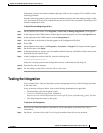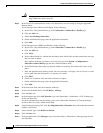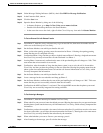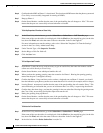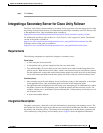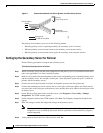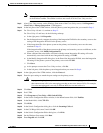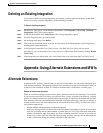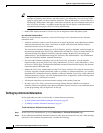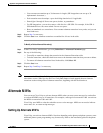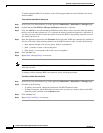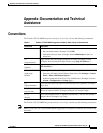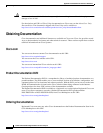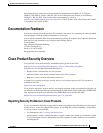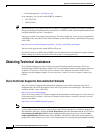
19
Toshiba CTX 670 SMDI Integration Guide for Cisco Unity 4.0
OL-4404-07
Appendix: Using Alternate Extensions and MWIs
Deleting an Existing Integration
Deleting an Existing Integration
If you want to delete an existing integration (for example, you have replaced the phone system with
which Cisco Unity originally integrated), do the following procedure.
To Delete an Existing Integration
Step 1 On the Cisco Unity server, on the Windows Start menu, click Programs > Cisco Unity > Manage
Integrations. The UTIM window appears.
Step 2 In the left pane, double-click Unity Server. The existing integrations appear.
Step 3 Click the integration that you want to delete.
Step 4 On the Integration menu, click Delete.
Step 5 Follow the on-screen instructions to assign the subscribers of the deleted phone system integration to
another phone system integration.
Step 6 At the prompt to restart the Cisco Unity services, click Yes. The Cisco Unity services restart.
Alternatively, you can restart the Cisco Unity services in UTIM on the Tools menu by clicking Restart
Cisco Unity.
Step 7 If the integration you deleted used voice cards, remove the voice cards from the Cisco Unity server.
Appendix: Using Alternate Extensions and MWIs
Alternate Extensions
In addition to the “primary” extension that you specify for subscribers, you can assign subscribers up to
nine alternate extensions. (The primary extension is the one that you assign to each subscriber when you
create his or her subscriber account; it is listed on the Subscribers > Subscribers > Profile page.)
Reasons to Use Alternate Extensions
There are several reasonsthat you may want to specify alternateextensions for subscribers. For example,
if you have more than one Cisco Unity server that accesses a single, corporate-wide directory, you may
want to use alternateextensions to simplify addressing messages tosubscribers at the different locations.
With alternate extensions, the number that a subscriber uses when addressing a message to someone at
another location can be the same number that the subscriber dials when calling. You may also want to
use alternate extensions to:
• Handle multiple line appearances on subscriber phones.
• Offer easy message access on direct calls from a cell phone, home phone, or phone at an alternate
work site (assuming that the phone number is passed along to Cisco Unity from these other phone
systems). In addition, when such phones are used as alternate extensions, and are set to forward to
Cisco Unity, callers can listen to the subscriber greeting, and leave messages for the subscriber just
as they would when dialing the primary extension for the subscriber.



